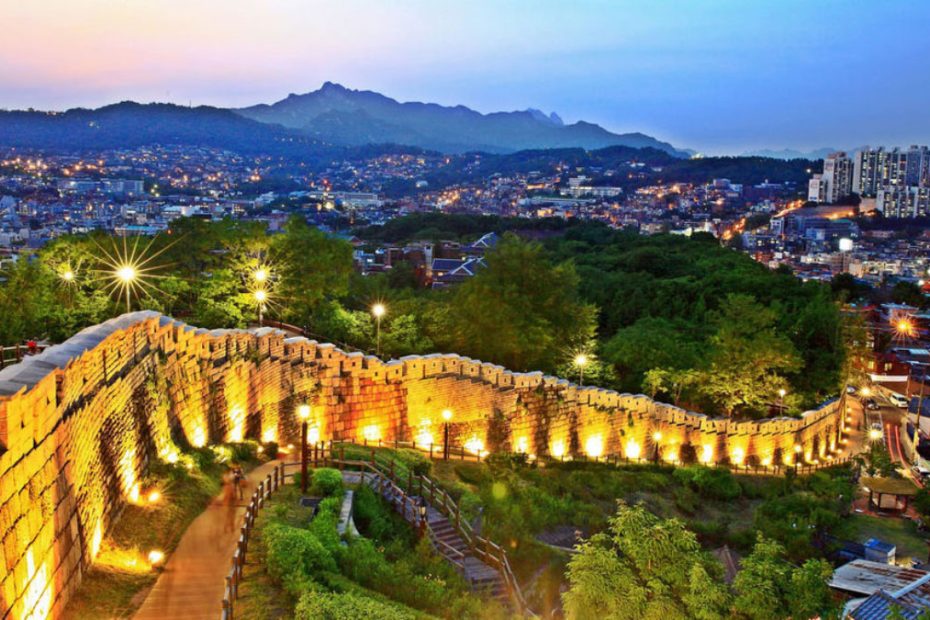Planning a trip to Seoul and wondering how to make the most of your week? Look no further. I’ve crafted the perfect 7-day itinerary to help you explore this vibrant city, from its historic palaces to its bustling markets and trendy neighborhoods. Whether you’re a foodie, a history buff, or a K-pop fan, Seoul has something for everyone.
Key Takeaways
- Comprehensive Itinerary: The 7-day itinerary offers an in-depth exploration of Seoul, covering historical sites, modern attractions, shopping districts, and cultural neighborhoods.
- Day-by-Day Breakdown: Each day highlights specific activities and destinations, ensuring a diverse experience ranging from historic palaces to bustling markets and serene nature spots.
- Cultural Immersion: Key cultural sites such as Gyeongbokgung Palace, Changdeokgung Palace, and Bukchon Hanok Village provide a deep dive into Korea’s rich history and traditions.
- Shopping and Modern Seoul: Vibrant shopping streets like Myeongdong and high-end districts like Gangnam showcase the contemporary side of Seoul, complete with trendy shops, dining, and entertainment options.
- Nature and Relaxation: Places like Bukhansan National Park and Cheonggyecheon Stream offer a serene escape from urban life, perfect for nature lovers and those seeking relaxation.
- Ending Highlights: Unique experiences such as a Han River Cruise and a visit to the War Memorial of Korea round off the trip, ensuring an unforgettable and well-rounded journey through Seoul.
Day 1: Exploring The Heart Of Seoul
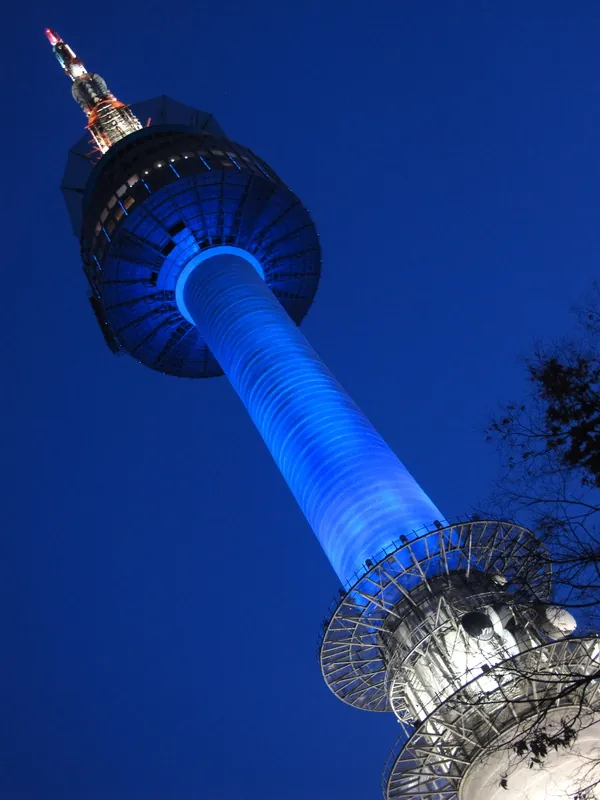
Day 1 begins with a deep jump into Seoul’s historical and cultural core. This itinerary covers key landmarks that showcase the city’s rich heritage.
Gyeongbokgung Palace
I started my adventure with a visit to Gyeongbokgung Palace, the largest of the Five Grand Palaces built during the Joseon Dynasty. I marveled at the grand architecture and witnessed the changing of the guard ceremony, a captivating display of Korean tradition. Within the palace grounds, I explored the National Folk Museum of Korea, learning about the country’s diverse history through various exhibits.
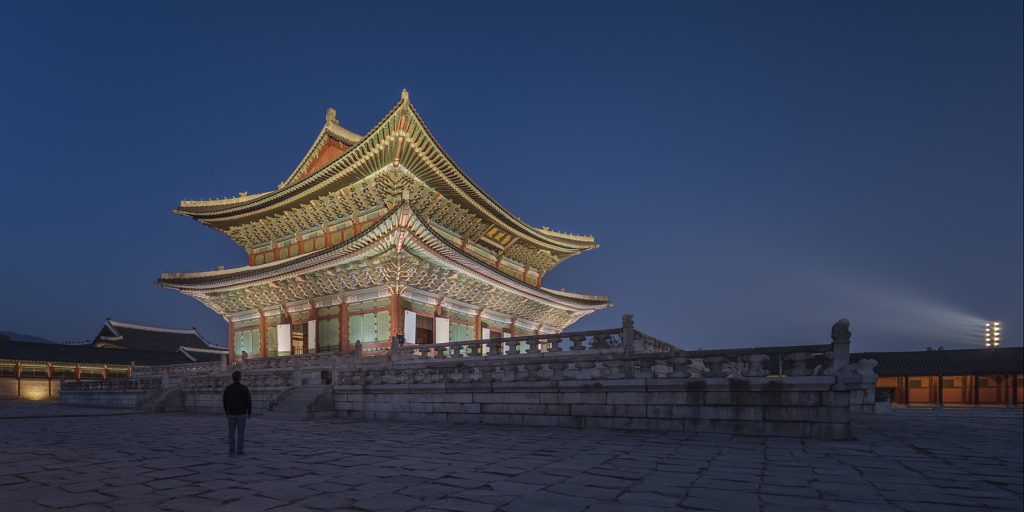
Highlights:
- The main Throne Hall (Geunjeongjeon) features stunning architecture.
- The changing of the guard ceremony takes place every hour from 10:00 AM to 3:00 PM.
- The National Folk Museum offers insights through artifacts and folklore.
Bukchon Hanok Village
Next, I wandered through Bukchon Hanok Village, a charming residential area that boasts hundreds of traditional houses known as ‘hanoks’. The narrow lanes of Bukchon transported me to old Seoul, where I appreciated the harmony of traditional Korean architecture set against a modern backdrop.
Activities:
- Walking tours provide historical context and guide visitors through significant spots.
- Hanok Stay options allow for an immersive overnight experience.
- Tea houses and cultural workshops offer interactive experiences.
Insadong Street
In the afternoon, I headed to Insadong Street, a vibrant area known for its traditional crafts and antiques. As I strolled down the pedestrian-friendly street, I encountered numerous shops, galleries, and street performers. Among the must-visit spots was the Ssamziegil complex, a multi-story mall featuring handcrafted items and unique eateries.
- Numerous art galleries showcasing traditional and contemporary Korean art.
- Antique shops selling a variety of curios and vintage items.
- Traditional tea houses offering a respite along with authentic Korean tea.
These destinations richly encapsulate Seoul’s dynamic blend of tradition and modernity, setting a compelling tone for the days ahead.
Day 2: Modern Seoul And Shopping
Day 2 of my 7-day Seoul itinerary focuses on the city’s modern side and offers plenty of shopping opportunities. I explored vibrant shopping streets and visited iconic landmarks, immersing myself in contemporary Seoul.
Myeongdong Shopping Street
Start my day at Myeongdong Shopping Street, one of Seoul’s top shopping destinations. The street bustles with activity and offers a mix of department stores, boutiques, and street food stalls. High-end brands, such as Nike and Uniqlo, stand alongside Korean beauty shops like Innisfree and Etude House.
I took my time browsing through various stores and found unique souvenirs at affordable prices. The street food adds to the experience, with vendors offering treats like hotteok (sweet pancakes) and tteokbokki (spicy rice cakes). Myeongdong is not just about shopping; it’s an exhilarating start to the day in Seoul.
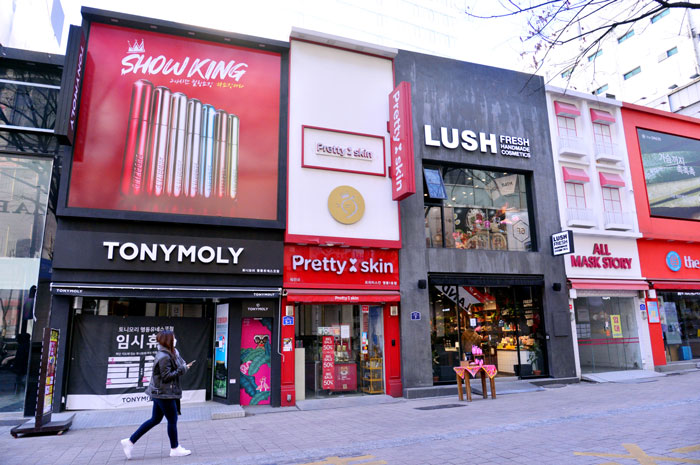
Namsan Seoul Tower
After lunch, I headed to Namsan Seoul Tower, right on Namsan Mountain. This iconic tower showcases panoramic views of Seoul’s sprawling cityscape. I took the cable car ride up the mountain, which provided stunning views of the city below.
At the top, I explored the observatory and enjoyed the breathtaking scenery. The tower’s digital observatory offered glimpses of landmarks and cityscapes. The surrounding Namsan Mountain Park is a great spot for a walk or a quiet moment to enjoy nature amidst the urban environment.
Dongdaemun Design Plaza
Heading to the Dongdaemun Design Plaza (DDP), a hub of modern architecture and fashion, filled my afternoon with excitement. This landmark is celebrated for its futuristic design by architect Zaha Hadid and serves as a center for design and culture in Seoul.
I visited the design museum, which showcased various exhibitions and hosted fashion events. The area around DDP is also a shopping paradise, with markets like Dongdaemun Night Market and malls like Migliore offering fashion items and accessories. This mix of design and shopping made my visit to DDP a perfect blend of creativity and commerce.
Day 3: Cultural And Historical Sights
Day 3 focuses on the rich cultural and historical heritage of Seoul. The day features three significant attractions: Changdeokgung Palace, Jongmyo Shrine, and the Seoul City Wall.
Changdeokgung Palace
Changdeokgung Palace, built in 1405, stands as the second oldest palace in Seoul and is often considered the city’s most beautiful. As a UNESCO World Heritage Site, it served as the principal residence for many Joseon kings. The palace’s architecture harmonizes with the natural world, creating a picturesque scene. Visitors can explore several notable structures within the palace grounds, including the Donhwamun Gate, Palace Chambers, Geumcheongyo Bridge, Injeongjeon Hall, Seonjeongjeon Hall, Huijeongdang House, and Daejojeon Hall. The Secret Garden, or Huwon, is another highlight, featuring ponds, pavilions, and meticulously manicured gardens.
Jongmyo Shrine
Jongmyo Shrine, another UNESCO World Heritage Site, is a Confucian shrine dedicated to the deceased kings and queens of the Joseon Dynasty. Built in the 14th century, the shrine is one of the oldest and most authentic of its kind. Visitors can witness traditional Korean rituals performed here, providing a deep insight into the country’s cultural practices. Noteworthy structures within the shrine complex include Jeongjeon Hall, the main hall, and Yeongnyeongjeon Hall, the hall of eternal peace. The shrine’s serene surroundings and historical significance make it a must-visit for those interested in Korean history and culture.
Seoul City Wall
The Seoul City Wall, or Hanyangdoseong, spans 18.6 kilometers and dates back to the 14th century. Built to protect the city from invaders, the wall offers a scenic hike with panoramic views of Seoul. The wall encompasses four major gates: Sungnyemun, Heunginjimun, Sukjeongmun, and Donuimun, each with its own historical importance. Visitors can explore various sections of the wall, including Naksan Park, Namsan Mountain, and Bugaksan Mountain, which provide unique vantage points and historical context. Walking along the wall, you can appreciate the blend of natural beauty and historical architecture, making it a compelling part of Seoul’s cultural heritage.
Day 4: Nature And Relaxation
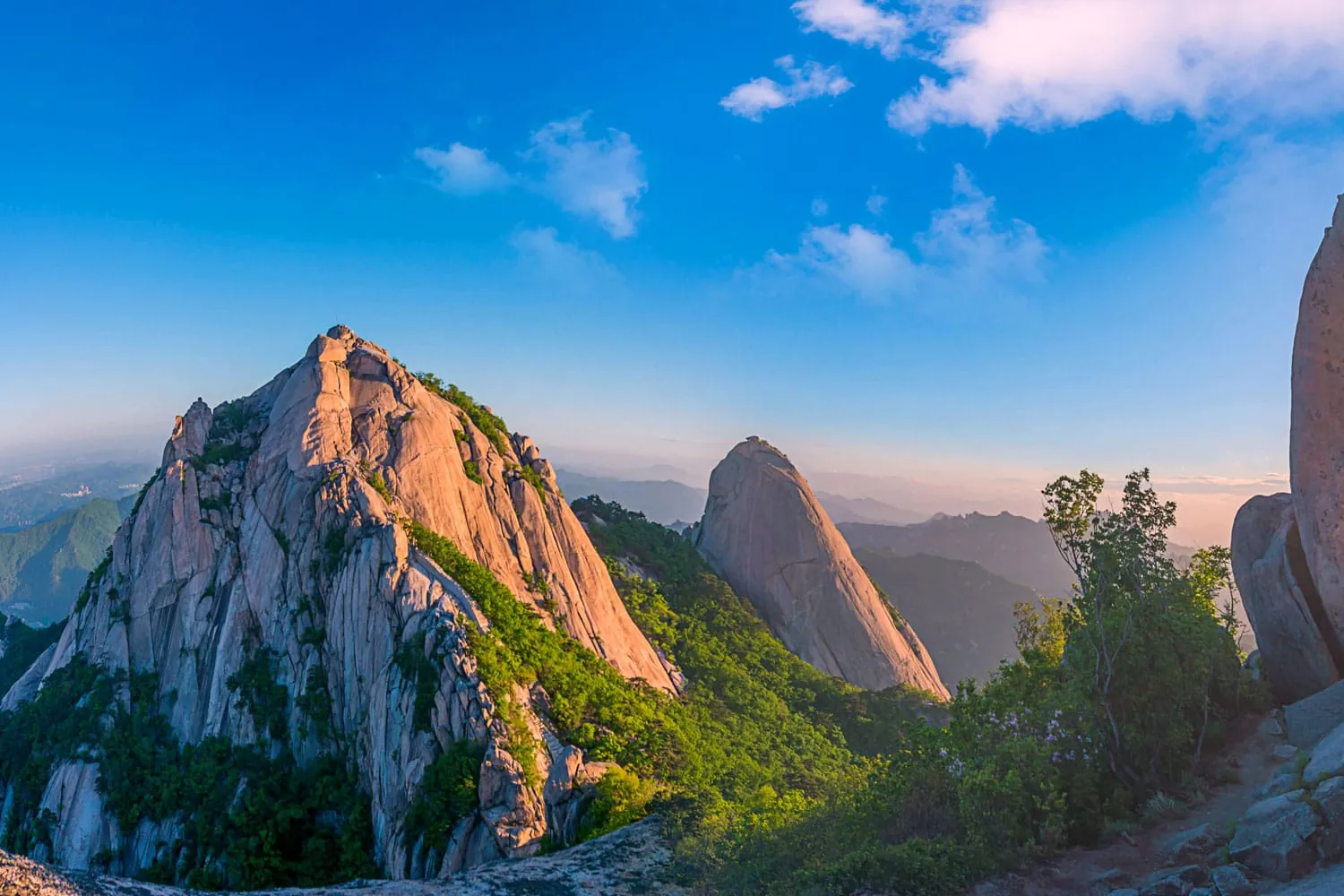
Day 4 of my 7-day Seoul itinerary focuses on nature and relaxation. I’ll explore some of Seoul’s most serene and natural attractions.
Bukhansan National Park
I begin my day with a visit to Bukhansan National Park, a natural sanctuary on the outskirts of Seoul. Known for its stunning granite peaks and scenic hiking trails, Bukhansan offers a refreshing escape from urban life. I choose a trail that suits my level of fitness and enjoy the panoramic views of Seoul from the top. With over 100 km of trails, Bukhansan caters to both novice and experienced hikers. The park is home to a diverse array of flora and fauna, making it a paradise for nature enthusiasts. Remember to pack water and snacks for the journey.
Cheonggyecheon Stream
After my morning hike, I head to Cheonggyecheon Stream, an ecological park and walkway that has replaced a historic stream from the Joseon Dynasty. This 11 km-long stream is a revitalized urban space where I can relax and unwind. The stream runs through downtown Seoul, offering serene spots with waterfalls, bridges, and abundant greenery. As I walk along the stream, I notice various artworks and installations that add a cultural touch to the natural beauty. Cheonggyecheon also hosts numerous seasonal events and festivals, enhancing the experience of visiting this urban oasis.
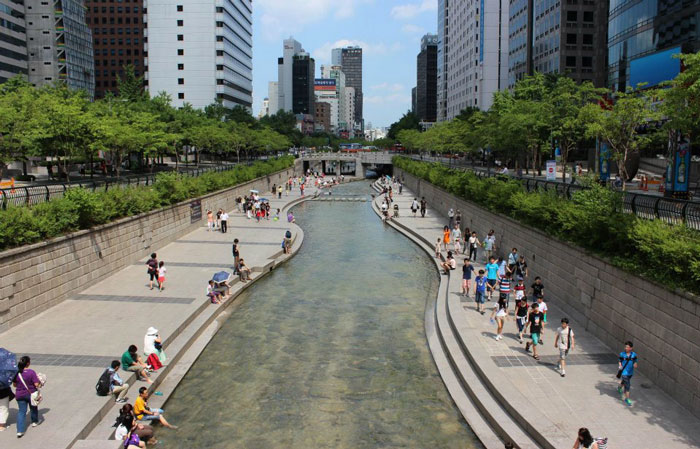
Namsangol Hanok Village
Next, I visit Namsangol Hanok Village, a traditional Korean village located in the heart of Seoul. The village features well-preserved hanok (traditional Korean houses) from the Joseon Dynasty. I explore the beautifully restored houses and experience traditional Korean lifestyle and culture. The village also offers cultural programs, such as tea ceremonies and traditional Korean games, providing an immersive cultural experience. Namsangol Hanok Village is a perfect blend of history, culture, and nature, making it an essential stop in my itinerary.
Day 5: Traditional Markets And Street Food
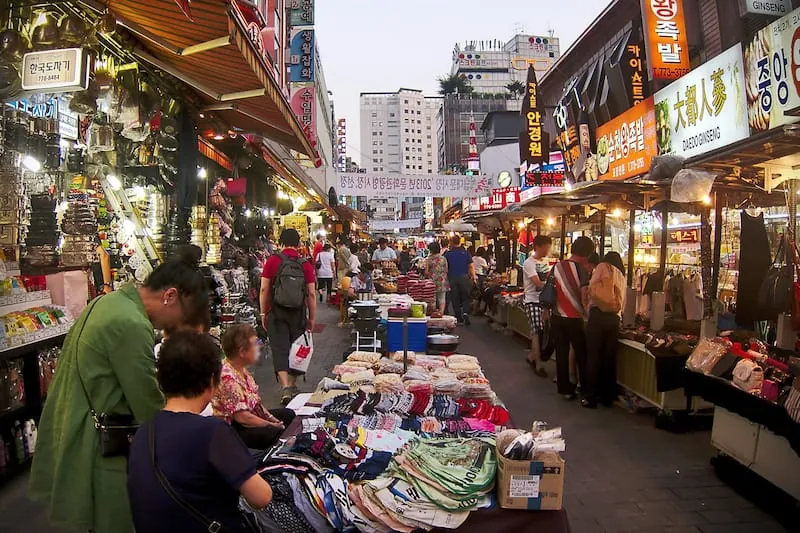
Day 5 immerses me in Seoul’s vibrant traditional markets, offering an authentic taste of Korean street food and local culture.
Gwangjang Market
Gwangjang Market, one of Seoul’s oldest and largest markets, is famous for its traditional Korean street food. Established in 1905, it provides a bustling atmosphere packed with food stalls and vendors. I start my day savoring bindaetteok, crispy deep-fried mung bean pancakes, perfectly paired with a dipping sauce. The market’s also known for mayak gimbap, small seaweed rice rolls that are incredibly addictive.
Operating hours span from 9:00 AM to 10:00 PM, giving me plenty of time to explore. Besides food, Gwangjang Market offers a range of handmade goods, secondhand clothing, and household items. Each alley reveals something unique, making the experience not just about food but a jump into Korean culture. The smells and sounds here are distinct, drawing both locals and tourists in.
Namdaemun Market
Namdaemun Market, another staple in Seoul, dates back to 1964 and serves as Korea’s largest traditional market. Known for a diverse range of goods, including clothing, accessories, toys, and homeware, it’s an ideal destination for both shopping and food exploration. I often find myself drawn to the food stalls offering kalguksu, hand-cut noodle soup, and hotteok, sweet Korean pancakes.
The market opens early at 11:00 AM and remains lively until around 3:00 AM, allowing me to wander at my leisure. Located near the historic Namdaemun Gate, it blends shopping with a touch of Korean history. Bargaining is common here, providing an engaging shopping experience.
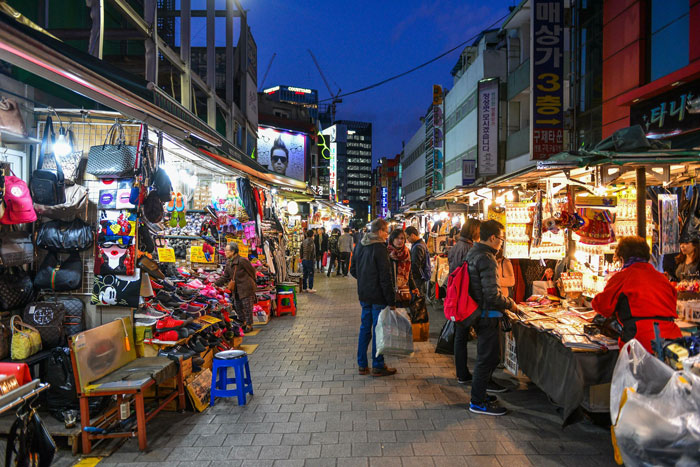
Hongdae Street
Hongdae Street, renowned for its youthful vibe and creative culture, is located near Hongik University. It’s famous for its street food, cafes, and independent shops, attracting a younger crowd. Here, I indulge in tteokbokki, spicy rice cakes, and odeng, fish cake skewers, while enjoying live music and performances.
Hongdae transforms into a bustling night market after dusk. It’s also a hub for arts and crafts, with stalls selling unique handmade items. The energy of Hongdae is infectious, making it a great place to wrap up my day with street performances and vibrant nightlife.
Day 6: Exploring Gangnam District
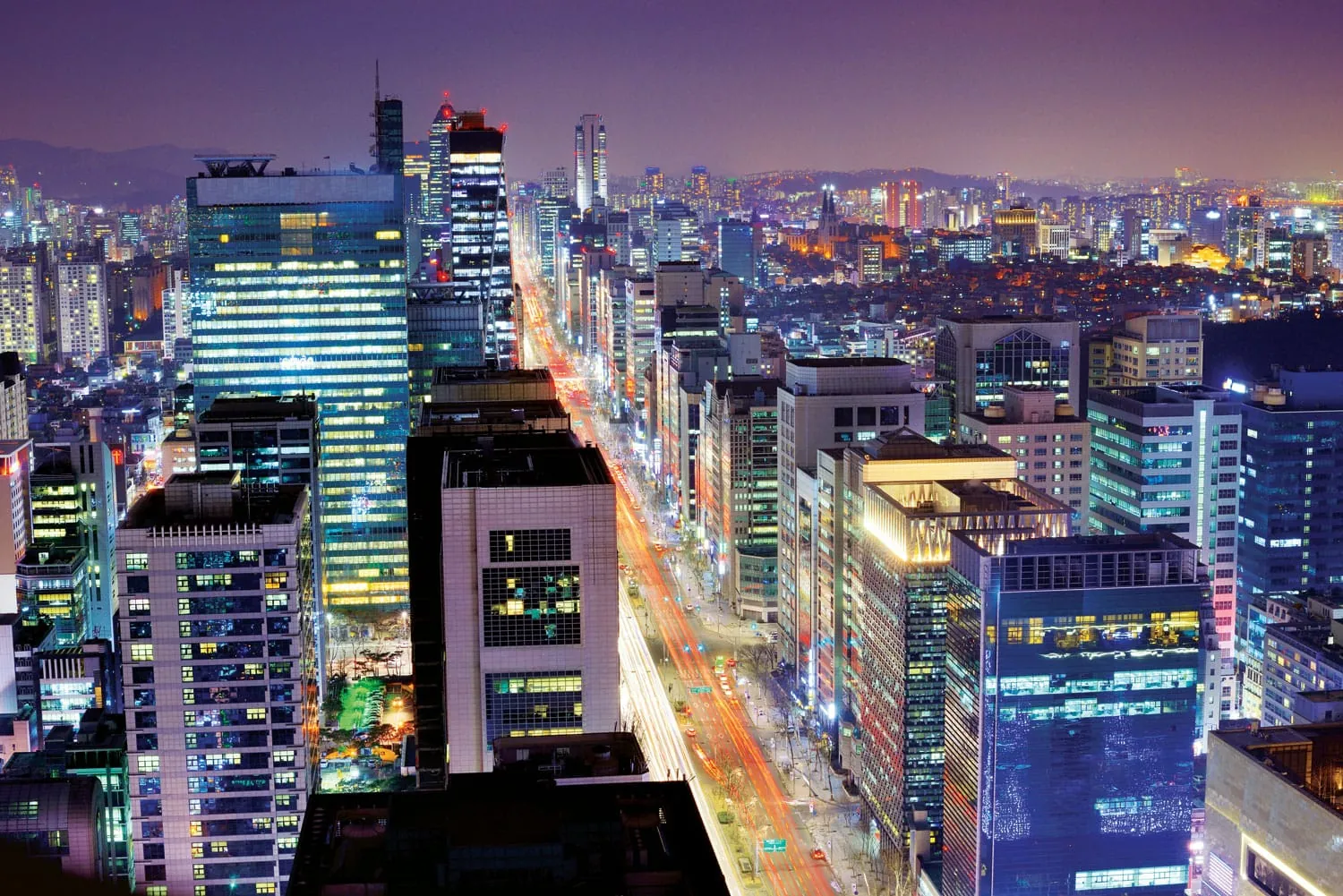
Day 6 takes you to the vibrant Gangnam District, known for its upscale shopping, modern architecture, and cultural sites.
COEX Mall
Start the day at COEX Mall, one of the largest underground shopping malls globally. This massive complex offers a variety of shopping, dining, and entertainment options. Explore a wide range of stores, from high-end international brands to local boutiques. Sample diverse food at the numerous restaurants and cafes.
The COEX Mall isn’t just for shopping. Catch a movie at the giant Megabox theater, which offers a premium cinema experience. Discover Korean culinary history at the Kimchi Museum, where you can learn about this staple food through interactive exhibits. Don’t miss the COEX Aquarium, home to thousands of marine creatures, offering an engaging experience for all ages.
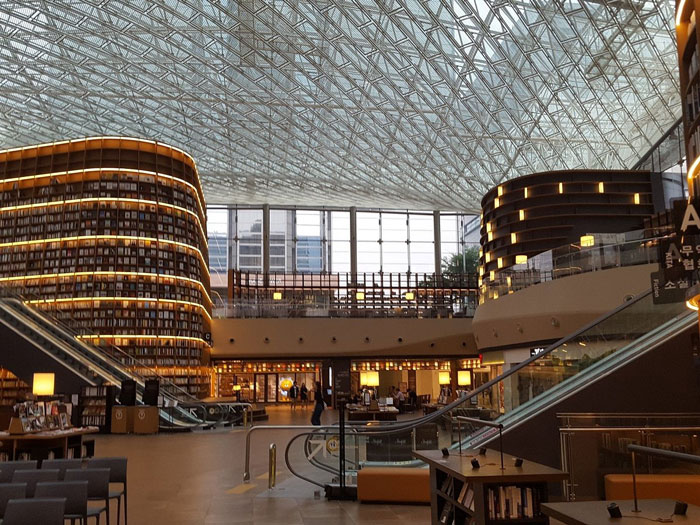
Bongeunsa Temple
After the hustle and bustle of COEX Mall, head to Bongeunsa Temple. This traditional Korean temple, nestled in the heart of Gangnam, offers a peaceful retreat. Established over 1,200 years ago, it contrasts sharply with the surrounding modern skyscrapers.
Explore the temple grounds, where you’ll find beautiful gardens and intricate statues. Participate in a temple stay program, if available, to experience Korean Buddhism more deeply. Some days, monks offer tours and meditation classes, providing a serene escape from the urban world.
Sinsadong Garosu-gil
Finish the day at Sinsadong Garosu-gil, a trendy tree-lined street famous for its boutique shops, cafes, and restaurants. Known for its European vibe, Garosu-gil offers a unique shopping and dining experience. Browse through designer stores, quirky boutiques, and art galleries.
Cafes and restaurants line the street, providing ample options for a relaxing meal or a quick coffee break. Whether you’re in the mood for traditional Korean cuisine or international dishes, you’ll find something to satisfy your palate. The lively atmosphere and chic ambiance make Garosu-gil the perfect end to your day in Gangnam.
Day 7: Unique Experiences And Final Day
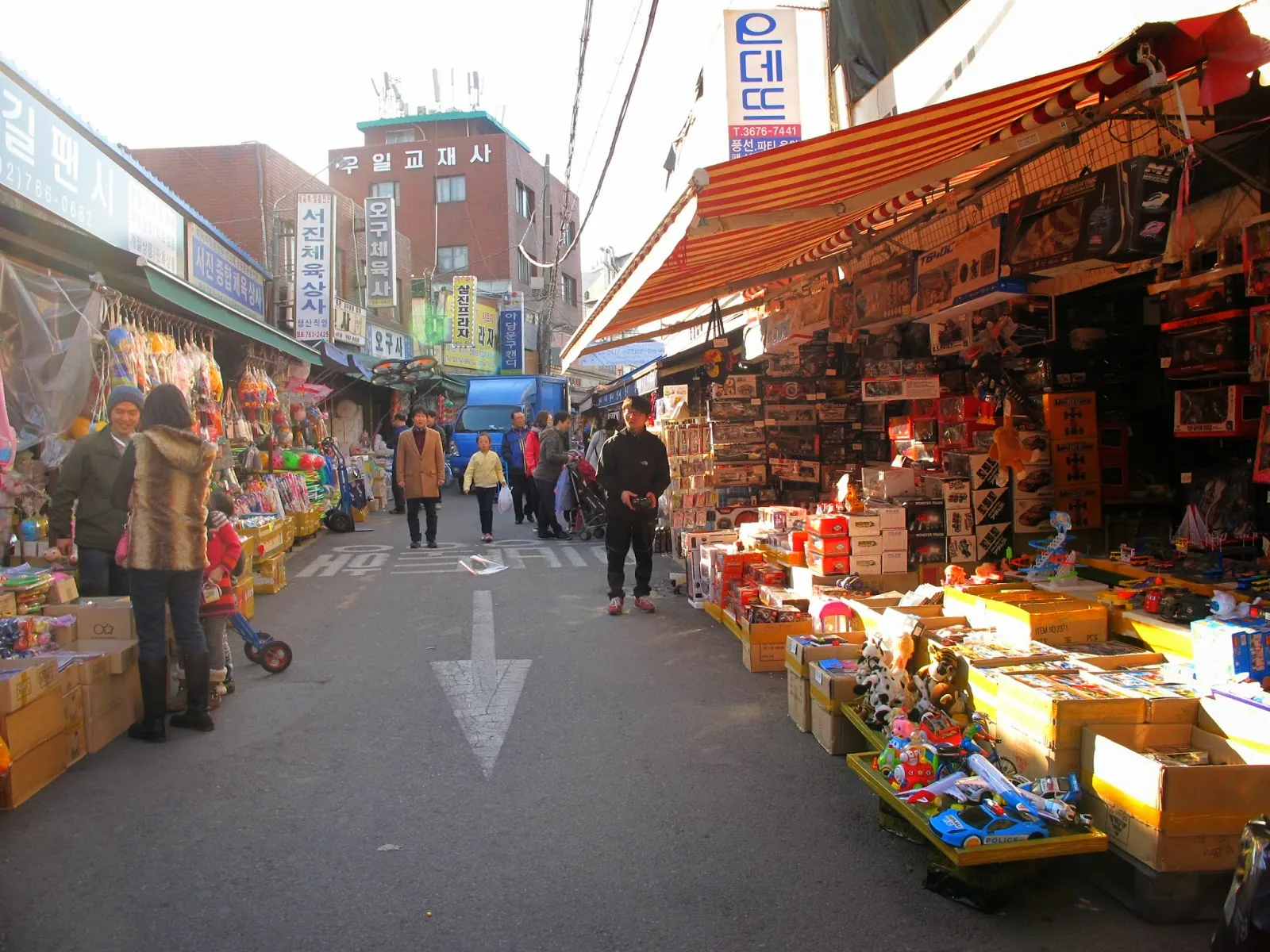
On the final day of my 7-day journey in Seoul, I sought out some unique experiences to cap off my visit. From historical insights to vibrant neighborhoods and a relaxing river cruise, the day was packed with unforgettable moments.
War Memorial Of Korea
I began my morning at the War Memorial of Korea, a museum dedicated to the country’s military history. Upon entering, I found an extensive collection of artifacts and exhibits that detailed the Korean War and other historical battles. Interactive displays offered a multimedia experience that made the visit both educational and engaging.
The museum’s outdoor exhibition areas featured military equipment, including tanks and aircraft, providing a tangible connection to Korea’s past. I spent a couple of hours exploring the six indoor exhibition halls, each focusing on different aspects of Korea’s military history, from ancient times to modern conflicts. Visiting the War Memorial of Korea gave me a deep appreciation for the sacrifices made throughout Korea’s tumultuous history.
Itaewon District
In the afternoon, I headed to the Itaewon District, known for its eclectic mix of international cuisine and vibrant atmosphere. Popular among foreigners, Itaewon offered a wide range of dining options, so I treated myself to a delicious lunch at one of the local eateries, savoring a fusion of traditional Korean and global flavors.
Walking through Itaewon’s streets, I discovered various shops and cafes, each with its own unique charm. Even though Seoul’s vastness, Itaewon felt like a melting pot where different cultures intersected. I visited several boutiques, enjoying the diverse array of goods from fashion to souvenirs. The district’s lively energy made it an ideal place to spend a leisurely afternoon, engaging with various cultures and cuisines all in one spot.
Han River Cruise
As the evening approached, I opted for a serene Han River Cruise to conclude my week in Seoul. Boarding the boat, I settled in for a scenic journey along the Han River, which offers a stunning perspective of Seoul’s skyline. The cruise provided a tranquil escape from the bustling city, with panoramic views of famous landmarks like the Namsan Seoul Tower and the majestic bridges that span the river.
During the hour-long cruise, I enjoyed light refreshments and live music, making the experience even more special. The setting sun painted the sky with hues of orange and pink, casting a beautiful glow over the cityscape. The Han River Cruise was the perfect way to end my trip, offering a peaceful and picturesque finale to an action-packed seven days in Seoul.
Conclusion
Seoul offers a captivating blend of history modernity and natural beauty. From the regal Gyeongbokgung Palace to the bustling streets of Myeongdong there’s something for everyone. Exploring the serene landscapes of Bukhansan National Park and the vibrant Hongdae Street provides a balanced experience. The chic Gangnam District and the tranquil Bongeunsa Temple highlight Seoul’s diverse character. Ending the journey with a Han River Cruise after visiting Itaewon and the War Memorial of Korea leaves a lasting impression. This 7-day itinerary ensures you experience the best of what Seoul has to offer making it an unforgettable adventure.
Frequently Asked Questions
What is the best time to visit Seoul for a 7-day trip?
Seoul is beautiful year-round, but spring (April to June) and fall (September to November) offer the best weather for sightseeing.
Are there any admission fees to visit Gyeongbokgung Palace?
Yes, there is an admission fee for Gyeongbokgung Palace. It’s around KRW 3,000 for adults and KRW 1,500 for children, with discounts for groups and free admission on certain days.
How can I get to Bukhansan National Park from downtown Seoul?
You can reach Bukhansan National Park by taking the subway to Gupabal Station (Line 3). From there, take a local bus or taxi to the park entrance.
What is the best way to travel around Seoul?
The Seoul Metropolitan Subway is the most convenient and cost-effective way to travel around the city. Buses and taxis are also readily available.
Are there any English-speaking tours available at Changdeokgung Palace?
Yes, Changdeokgung Palace offers English-speaking guided tours at specific times of the day, enhancing your visit with detailed historical insights.
What kind of food can I find in the Itaewon District?
Itaewon District is known for its international cuisine, offering a variety of dishes such as American, Italian, Middle Eastern, and Korean fusion.
Is Myeongdong Shopping Street more suitable for day or night visits?
Myeongdong Shopping Street is vibrant both day and night. However, it becomes especially lively in the evening with street food vendors and light displays.
Are there any recommended hiking trails in Bukhansan National Park?
Yes, Bukhansan National Park has several hiking trails, with the Baegundae Peak trail being the most popular for its stunning views of Seoul.
Can I do a day trip to Gangnam District and still see most attractions?
Yes, you can see major attractions in Gangnam District, such as Bongeunsa Temple and COEX Mall, within a day.
Is the Han River Cruise suitable for families with children?
Absolutely, the Han River Cruise offers a relaxing experience ideal for families, with beautiful views and entertainment options suitable for all ages.

